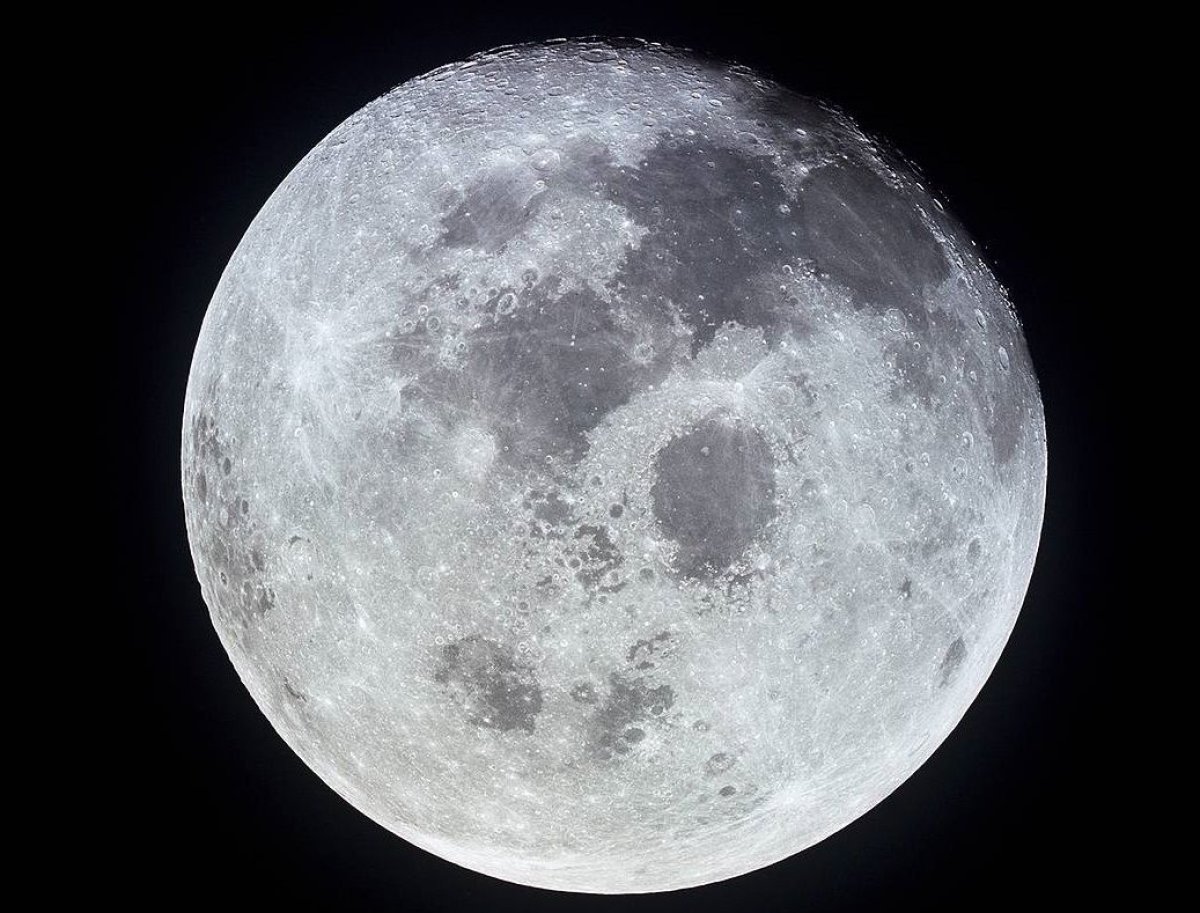Scientists have definitively confirmed the presence of water ice on the Moon's surface for the first time, according to a study published in the journal Proceedings of the National Academy of Sciences.
The ice—which could well be ancient—was identified in the dark, cold polar regions, mostly in the shadows of lunar craters where temperatures never reach above minus 250 degrees Fahrenheit. The nature of the Moon's tilt means that sunlight never hits these areas.
A team led by Shuai Li from the University of Hawaii and Brown University examined data from NASA's Moon Mineralogy Mapper (M3) instrument aboard the Indian Space Research Organization's Chandrayaan-1 spacecraft to identify three specific signatures of water ice which would definitively prove its existence on the surface.
The instrument—which NASA contributed to Chandrayaan-1, India's first Moon mission—is a type of spectrometer. These devices enable scientists to determine information about a substance based on the analysis of light properties.
Using M3, the team identified the reflective characteristics of water ice on the lunar surface, but they were also able to measure the distinctive way its molecules absorb light in the infrared spectrum. They found that the frozen water lies within the first few millimeters of the surface and is more widely distributed at the south pole.
Scientists had previously found indirect evidence of possible water ice at the lunar south pole. However, these signs could also have been explained by other phenomena, such as unusually reflective lunar soil.

The new findings have significant implications for future missions to the Moon, according to the researchers.
For example, it's possible that the water ice is easily accessible and thus could be harnessed as a resource, enabling astronauts to stay longer on the lunar surface and possibly even set up permanent human colonies. Certainly, this water will be easier to reach than the reserves that are thought to lie below the lunar surface.
"Our detections are surface exposed water ice," Li told Newsweek. "It can be explored directly [and] can be used as drinking water and [for] making rocket fuels etc."
"The Moon is our nearest neighbor, but as we explore more about her, we feel we know less," Li said. "Understanding the distribution, formation, and retention processes of water ice is significant for revealing the formation and evolution of our Moon and for utilizing it [as a resource]."
Uncommon Knowledge
Newsweek is committed to challenging conventional wisdom and finding connections in the search for common ground.
Newsweek is committed to challenging conventional wisdom and finding connections in the search for common ground.
About the writer
Aristos is a Newsweek science reporter with the London, U.K., bureau. He reports on science and health topics, including; animal, ... Read more
To read how Newsweek uses AI as a newsroom tool, Click here.








